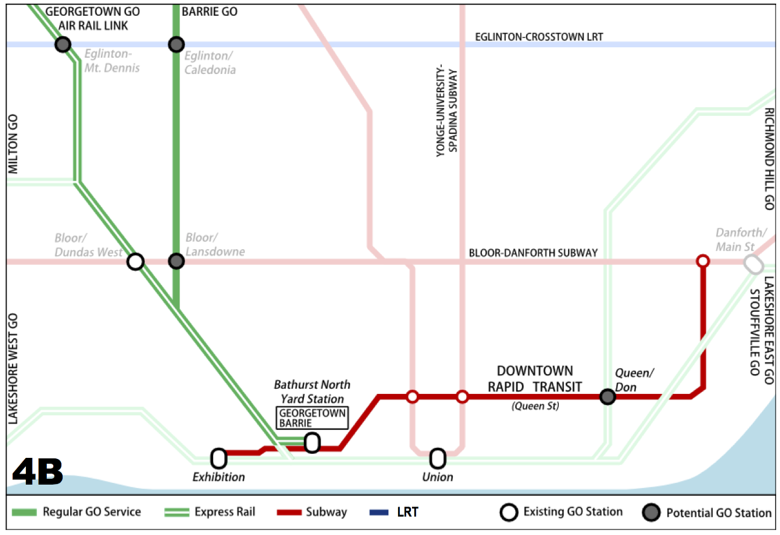When my colleague Ben Spurr
revealed some details from the confidential transit plans for Premier Doug Ford’s new
Ontario Line on Tuesday, it was interesting to note that a significant portion of it runs outdoors, above ground. And that because of that it may need to use smaller light rail trains rather than conventional subway cars.
This isn’t the biggest concern about the idea, by any stretch, or the most significant thing to debate. But it is a detail worth taking a moment to look at.
Because anyone who has been anywhere near Toronto transit discussions for the past decade will remember a time not long ago when Doug Ford and his brother more or less declared above-ground light rail Public Enemy No. 1. Most locals won’t need me to rehash the Scarborough RT replacement debate, but in a nutshell: a shovel-ready light rail project that was fully funded by the province that would have run in an existing dedicated corridor above ground was torpedoed at the insistence of the Ford brothers. Instead they were in favour of tunnelling an underground subway line. Even though the subway line would have fewer stops, and take longer to build and cost billions of dollars more.
This seemed unnecessary to many of us. But the Ford brothers and their allies insisted above-ground transit — even above ground transit that doesn’t share a road with cars — was second-class goods that was beneath what the city’s residents deserved, and that only tunnels were acceptable.
Maybe we tend too much to attribute the decisions and controversies of Rob Ford’s mayoralty to his brother who is now the premier. But Doug Ford pointed at this particular decision repeatedly — characterized as delivering a subway for Scarborough — as a qualification of his for the premiership. And on the very first day of his campaign, emphasized the importance of the above-versus-below ground distinction, scoffing at his opponents vision of a “two-tiered transit system that all the people in Scarborough have to stand out in the freezing cold in the winter and everyone else in the city gets rapid underground transit,”
he said.
He appears to have changed his mind somewhat. Since he’s now in the position of replacing a fully underground subway line the city was ready to get to work on with an idea for a longer, partly-above-ground line that may use light rail.
I emphasize that on its merits, in isolation, this is a distinction that doesn’t trouble me at all. I think (and the city’s existing transit network shows — as do those of many other cities) that trains running above ground can be just great, and that light rail is often the best choice in a particular corridor. I thought that in Scarborough, and I’m willing to consider it here, in principle.
The larger problem with Ford’s new idea is that it is, at this stage, just that: an idea, rather than a plan. It may be a good idea to extend the line further north (indeed, I think it likely is), and building bridges over the river rather than tunnelling under it may make a lot of sense. I have no strong opinion on the type of train used — though a lot of other operational concerns (storage and maintenance yard space, interchangeability of cars with other lines, capacity at a given frequency of service) certainly hinge on it.
Those elements require study and design and budgeting and rebudgeting. Meanwhile, the plan that has been developed and approved by the city over years and years was pretty close to being ready to go. The fear with Ford’s revision of the plan is not about its elevation. It’s about whether it will be able to be built in a reasonable time frame, or without overspending precious budget dollars.
Or whether, after scrapping the old plan, the new one will actually be built at all. That is always the legitimate and consuming concern in any transit discussion in Toronto.

